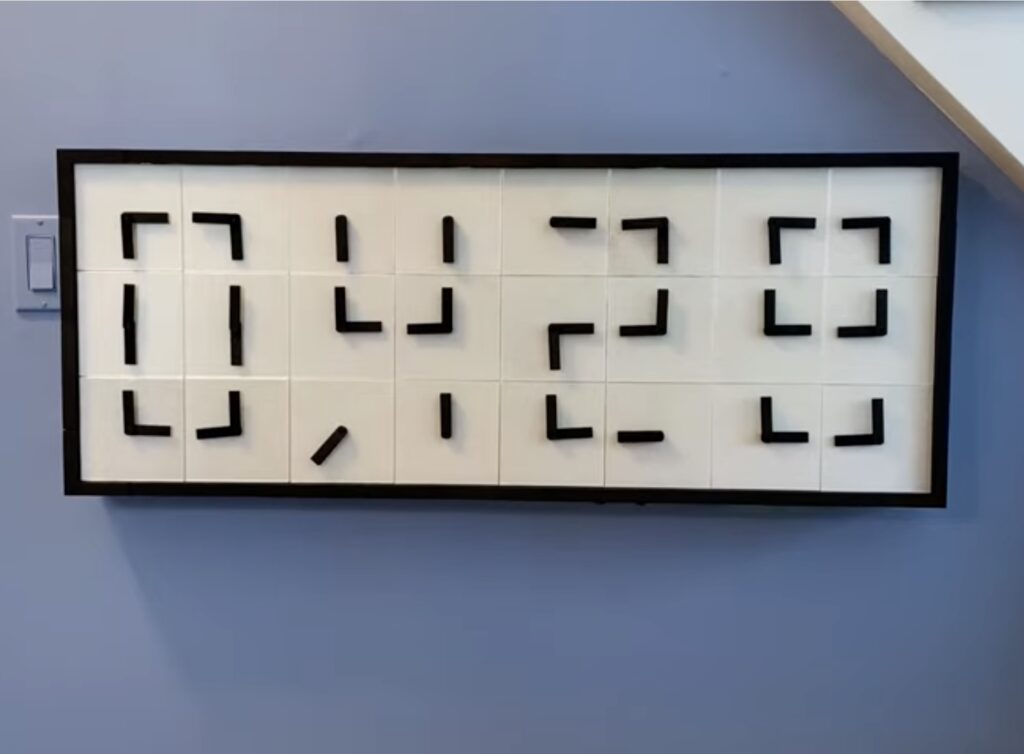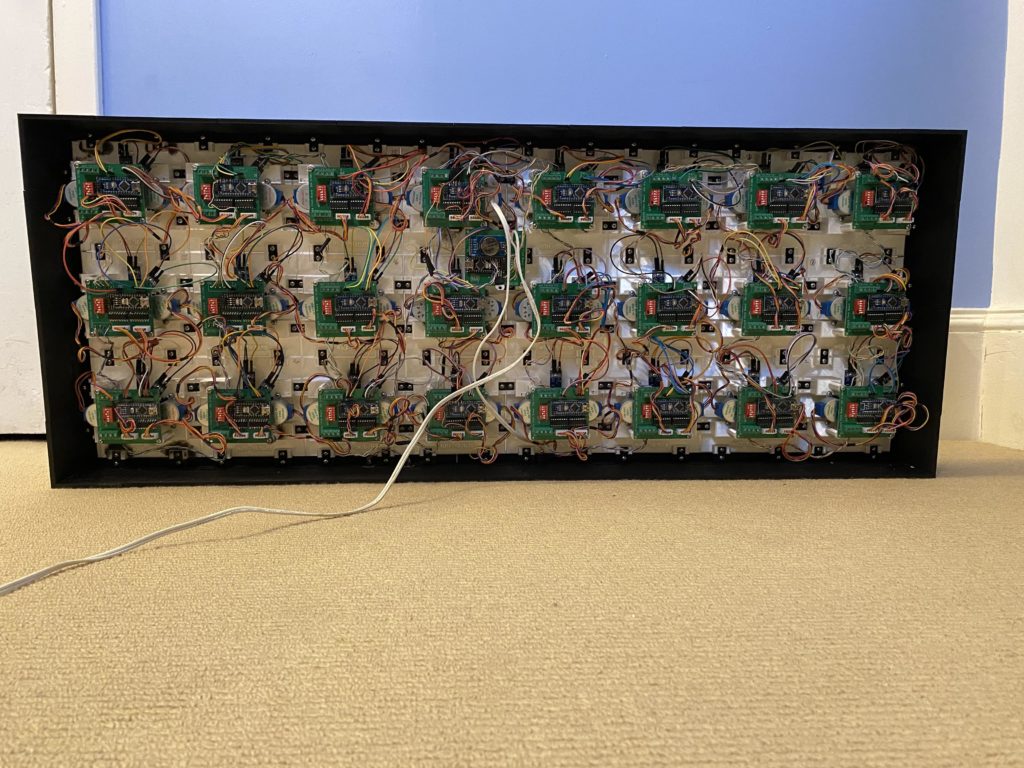3D-printed digital clock contains 24 analog clocks

Clocks are fantastic means of creative expression, as they serve a practical purpose and therefore have a reason to exist, but aren’t limited to pure functionality. As such, we see many interesting clock designs. But ihart’s 3D-printed digital clock made from 24 individual analog clocks takes the proverbial cake.
When observed from a distance, this clock looks like it contains large seven-segment displays. But it actually displays the numerical digits of the time using the two hands of 24 individual analog clocks. Those analog clocks don’t show the time, but instead form the segments that make up the “digital” digits. The choreographed dance of the clock hands as the time changes is mesmerizing and the sheer complexity of the system should excite even the most stoic engineers in our audience.

Each of the 24 analog clocks has two hands that move independently, so this clock requires a total of 48 stepper motors. Each hand also requires a Hall effect sensor for finding its home position. While there were many other potential solutions, ihart chose to use one Arduino Nano board for every analog clock. That means that each Arduino controls two stepper motors. To simplify wiring and power distribution, ihart designed a custom PCB to host each of those 24 Arduino boards. A 25th Arduino Nano, paired with an RTC (real-time clock) module, coordinates the operation of the other 24.
All of the mechanical components of the clock were 3D-printed. The design is somewhat modular to keep the unique part count down, which means that this could be expanded into a larger display. But even as it is, the clock is very impressive.